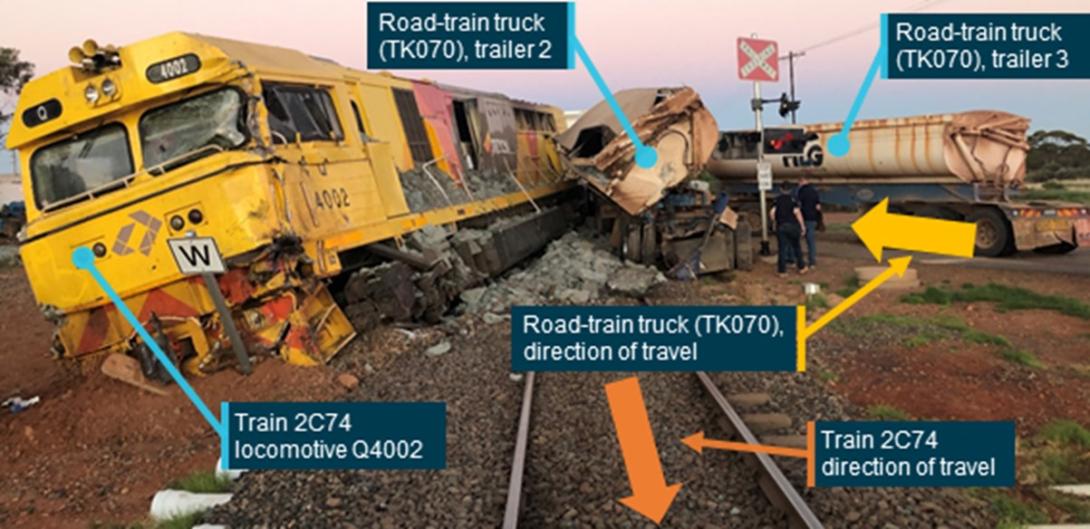
The Australian Transport Safety Bureau has completed its safety study into the risks associated with level crossing collisions, in particular involving heavy road vehicles.
“The study, released ahead of the national rail level crossing safety roundtable on Wednesday 6 March, set out to compare the severity of level crossing collisions involving heavy road vehicles, to those involving light road vehicles,” ATSB Chief Commissioner Angus Mitchell explained.
The research, detailed in the final report, used qualitative and quantitative methods to analyse data from both Australia and the United States, including a review of all reported level crossing collisions involving heavy vehicles in Australia from July 2014 to August 2022.
“The analysis confirmed collisions involving heavy road vehicles are more common, and more dangerous, than those involving light vehicles,” Mr Mitchell said.
On a ‘per vehicle’ and ‘per kilometre travelled’ basis, heavy vehicles are more frequently involved in level crossing collisions than cars and other light vehicles.
“Level crossing collisions involving heavy vehicles were more likely to lead to injuries to the occupants of rail vehicles, to damage to rail vehicles and track, and to the derailment of rail vehicles,” Mr Mitchell said.
The study identified several themes in the 49 level crossing collisions involving heavy vehicles in Australia from July 2014 to August 2022. These included:
- In at least 12 collisions the heavy vehicle driver had regularly used the level crossing prior to the collision with the train.
- In at least 14 collisions, the heavy vehicle driver’s view of the track or level crossing protection equipment was obstructed by vegetation, the design of the heavy vehicle cab, poor crossing lighting, or sun glare.
- In at least 14 accidents, it was likely the heavy vehicle driver intentionally entered the level crossing in a manner contrary to road rules, however even in these instances the intention was to proceed through the crossing prior to the arrival of a train.
The study found that in a large majority of accidents at passively controlled crossings (that is, crossings without flashing lights or boom gates), the heavy vehicle driver did not detect the train, or detected the train too late to avoid a collision.
“Safety at passive crossings relies on motor vehicle drivers looking for and identifying trains, and the collisions analysed in our study primarily resulted from the presence of trains not being detected, being detected late, or being perceived incorrectly,” Mr Mitchell said.
“We know that humans are inherently susceptible to unintentional errors. And so long as passively controlled level crossing safety systems rely on road vehicle drivers always detecting the presence of trains, it is certain that this will fail from time to time and result in accidents in the future.”
Mr Mitchell said the use of additional engineering controls to alert road users to the need to stop would almost certainly provide an enhanced level of safety at level crossings.
“Safety improvements would be made by reducing the reliance on road vehicle drivers detecting the presence of trains.”
From this safety study, Standards Australia has also committed to reviewing the standard AS1742.7 to determine if additional design guidance for the installation of level crossing protection equipment can be provided to manage risks associated with curved road approaches to level crossings.
Mr Mitchell noted the ATSB is also currently investigating two heavy vehicle level crossing collisions, one near Katherine, in the Northern Territory, where two train drivers were injured, and the second near Cutana, South Australia, where two train drivers were fatally injured.
“I urge industry and government to review the findings of our safety study, and look forward to working with stakeholders at Wednesday’s roundtable in Brisbane,” Mr Mitchell concluded.
Read the safety study: Review of level crossing collisions involving trains and heavy road vehicles in Australia


